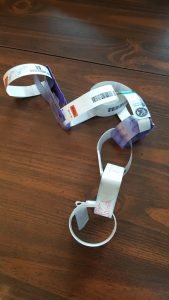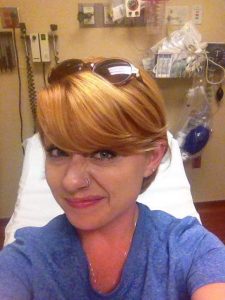Editor’s note: This is the fifth in a series of columns by Mary Horsley about IBD-related procedures. Part one, part two , part three and part four are also available.

Continuing with the “Scope Series” theme, this column discusses my experience with my second rectal surgery, a fistulotomy.
Unlike my perianal abscess, the fistulotomy was a planned surgery due to my Crohn’s disease. After my first surgery in the emergency room, I was scheduled for a follow-up appointment six weeks later.
This follow-up would review my rectum’s progress in healing and determine the next steps needed.
During my emergency surgery for the abscess, a fistula was born with the growing infection. During my follow-up, doctors did the fistulotomy to “try” to prevent another abscess.
A fistula can lead to tunneling and infection, occurring once or repeatedly. These forced infection tunnels can push outwards toward the surface, leading to abscesses, bleeding, pain, swelling and fissures.
After my perianal abscess, I was told to come back and be prepared for surgery, if necessary, but there was a chance I wouldn’t need it. My luck, I needed it. After six weeks of healing the last thing you want is another surgery down there but I had no choice.
Anesthesia was already prepped and prepared for the possibility of another surgery, and once I met with all the doctors who would participate in the procedure, I was sent to get in a gown and wheeled into surgery.

This meant my surgeon was going to cut out the 10 o’clock hour from my rectum. This would be the second time a portion of my rectum was removed, and this time to prevent any more tunnels in that segment.
The fistulotomy surgery went as well as expected. I was sent home to recuperate, with my plastic pillow in hand again.
Having dealt with a sore bottom the past few weeks with the perianal abscess, I knew this surgery would require more medicine and care for the wound. I was told not to lift anything heavy, and not to strain or force pressure to my rectum.
Like the perianal abscess, a sitz bath is required for cleaning the wound after surgery, with large gauze padding to tuck into your bottoms for leakage. There was padding inside the wound — a long string-like ribbon of gauze — that would need to be removed at home.
I had to go for another follow-up after this surgery, too, and I remember being in an exam room, leaning over the hospital bed resting on my elbows while showing off the doctor’s handiwork.
In my specific journey to diagnosis, a number of things contributed to my diagnosis but colonoscopies never suggested Crohn’s. The abscess and fistula helped in my diagnosis, but were the most painful thing I have ever experienced.
Thank you for staying tuned for these five articles within the Scope Series.
If you suspect an abscess, fissure, fistula or Crohn’s disease, please see a doctor. My experiences may be different than yours, but you never can be too prepared for what could happen with Crohn’s — because, for me, It Could Be Worse.


